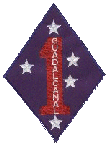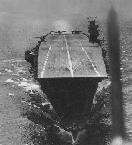mdiehl
Posts: 5998
Joined: 10/21/2000
Status: offline

|
Here is more about the penetration resistence of different ships. This article from Nate Okun's guns n armor page. It presumes Km Bismarck firing its 380mm main armament (15") at its BB contemporaries. It is to be noted that the US 16" had substantially greater penetration than the German 380mm. It is also to be noted that this comparison examines SoDak, not Iowa class vessels. The SoDaks were in general protected by the same armor as the Iowas, but the placement on the Iowas was superior. HL is the maximum range (in thousands of yards/meters) in which the armor could be holed, although the shell may be destroyed in the proccess. NL the "navy ballistic limit" (shell penetrates the armor plate but may be decapped) and EL (effective limit, the shell penetrates, retains its cap, and detonates to its maximum theoretical capability). The target is belt armor. Again, all the credit goes to Nate Ogun.
quote:
HL NL EL
SHIP Yards (Meters) Yards (Meters) Yards (Meters)
KM BISMARCK 35 (32) 29 (26.5) 27.9 (25.5)
HMS KING GEORGE V
-Amidships 28.4 (26) 23.8 (21.6) 22.9 (20.9)
-Magazines 27 (24.7) 21.5 (19.7) 20.8 (19)
RICHELIEU 24.5 (22.4) 20.8 (19) 18.6 (17)
VITTORIO VENETO 22.6 (20.7) 17.5 (16) NEVER (Shatter)
IJN YAMATO 21 (19.2) 17.7 (16.2) 15.5 (14.2)
USS SOUTH DAKOTA 20.3 (18.5) 16.4 (15) NEVER (Shatter)
Notice who's got the "never" listings in that?
Also there's this comment based on post war ballistics tests (IIRC at Dahlgren) also on Nate's page:
quote:
Japanese WWII projectiles remained at the British 1921 quality level, which was about the best for that time period, but very poor by WWII, especially at impact obliquities over 20o even against thin plates. U.S. post-WWII testing confirmed this. The YAMATO's 18.1" (460 mm) projectiles were better and could penetrate thin VH armor at 30o obliquity, but the improvement was rather slight. Their fixation on the diving shell design seems to have made improving their armor-penetration (and the armor itself) a low priority feature. In addition, the super-long fuze delays used for long underwater trajectories resulted in their WWII projectiles acting like solid shot unless they hit enough armor to drastically slow them down.
and this
quote:
The best all-round WWII armor-piercing projectiles were the U.S. designs. They were less able to remain in effective bursting condition after penetration than British projectiles, but they remained rigid under very difficult impact conditions and could penetrate armor of much greater thickness at much higher obliquities than anyone else's. For example, at least one WWII U.S. 14" Mark 16 MOD 8 capped armor piercing projectile (APC in British and U.S. Army nomenclature, but AP in U.S. Navy nomenclature, since the U.S. Navy assumed an AP cap was always used on a "true" AP projectile) penetrated intact through a WWII U.S. 13.5" (343 mm) Class 'A' plate at 49o obliquity at barely above the NL, which far exceeded any foreign design capability that I know of.
And this, a comment that encapsulates another length discussion about internal design. It is to be noted that Yamato was far more likely to suffer a "critical hit" than either a SoDak or an Iowa.
quote:
The BISMARCK and most of its contemporaries, with the major exception of the USS SOUTH DAKOTA, had very little armor between the magazines and the other spaces inside the Citadel
_____________________________
Show me a fellow who rejects statistical analysis a priori and I'll show you a fellow who has no knowledge of statistics.
Didn't we have this conversation already?
|
 Printable Version
Printable Version
















 The Yammy should eat the Iowa while they are still busy clearing the first gun jam with their skills.
The Yammy should eat the Iowa while they are still busy clearing the first gun jam with their skills. 

 New Messages
New Messages No New Messages
No New Messages Hot Topic w/ New Messages
Hot Topic w/ New Messages Hot Topic w/o New Messages
Hot Topic w/o New Messages Locked w/ New Messages
Locked w/ New Messages Locked w/o New Messages
Locked w/o New Messages Post New Thread
Post New Thread